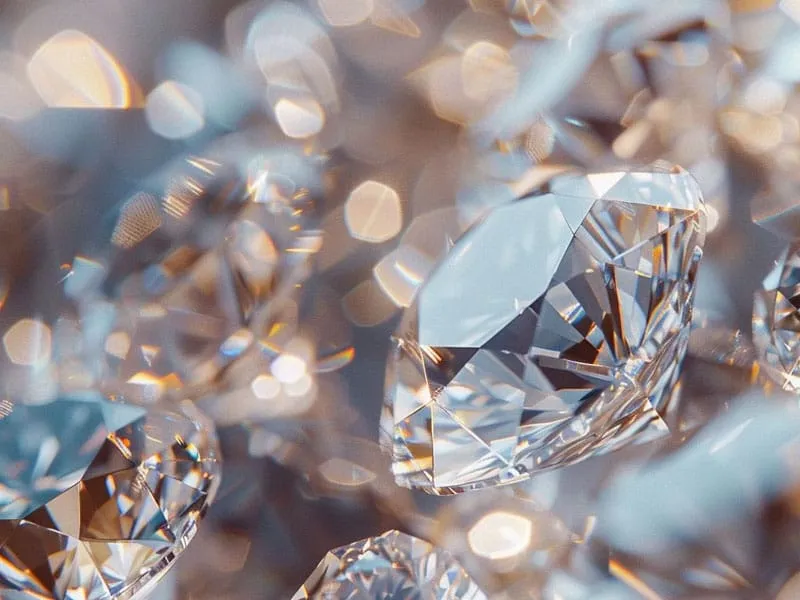
The Ultimate Guide to Comparing Natural Diamonds To Lab Diamonds
Choosing between a lab-created diamond and a natural one can be confusing.
Did you know both types sparkle just as brilliantly?
This article will shed light on the key differences, helping you make an informed choice.
Key Takeaways
- Both natural and lab-created diamonds have the same sparkle, but they come from different places. Natural diamonds form deep in the Earth over billions of years, while scientists make lab diamonds in a few weeks.
- Lab-created diamonds often cost 30-40% less than natural ones due to cheaper production processes and no mining costs. However, natural diamonds usually keep their value better over time.
- Certification matters for both types of diamonds. Labs like GIA or AGS check the quality using standards like cut, color, clarity, and carat weight. Certificates help buyers know what they are getting.
- Choosing between these two kinds of diamonds is not just about money or looks. It’s also about ethics and helping the environment. Lab-grown gems use less water and create less pollution.
- Consumer trends show more people picking lab-grown diamonds recently because they care about sustainability and ethical issues. Technology improvements make these stones just as good as natural ones while being kinder to Earth.
Understanding Natural and Lab-Created Diamonds

Digging into diamonds is like opening a treasure chest—every gem tells a story. Natural diamonds come from deep within the Earth, formed over billions of years while lab-created diamonds are crafted in scientific settings, mimicking nature’s process yet taking considerably less time.
Defining a natural diamond
A natural diamond is a gemstone that takes the spotlight for being formed deep under the Earth’s surface. Thanks to Mother Nature’s patience, these precious stones are born from carbon exposed to high pressure high temperature (HPHT) conditions deep underground.
Imagine—over billions of years, these tiny carbon bits transform into something so shiny and hard; it’s pure magic.
Natural diamonds embark on a long journey before hitting the jewelry store displays. They travel from deep craters through volcanic eruptions and finally get mined from rocks and waters in remote parts of our planet.
It’s not just about finding them—it’s a treasure hunt spanning continents! The Gemological Institute of America (GIA), along with other entities, steps in to grade these beauties based on their clarity grades, color, cut, and carat weight making each piece unique in its own way.
Now that you’re dazzled by nature’s creation, let’s dive into what makes lab-created diamonds stand out.
Exploring lab-created diamonds
Lab-created diamonds are like science’s magic trick, turning carbon into sparkling stones. Scientists use big words like HPHT (High Pressure High Temperature) and CVD (Chemical Vapor Deposition) to describe the processes.
Think of HPHT as cooking a diamond in a very fancy oven under lots of pressure. CVD, on the other hand, is more like painting layers upon layers of carbon until it turns into a diamond.
These gems have the same sparkle and hardness as those dug up from deep within Earth. They’re real diamonds but made by humans in labs instead of nature.
This tech-savvy approach means lab-grown diamonds pop out much faster than their natural cousins, who take billions of years to show up at the party.
Also, because they’re made by people, we can avoid some thorny issues like conflict diamonds that cause harm to workers and environments.
Analyzing Appearance and Quality
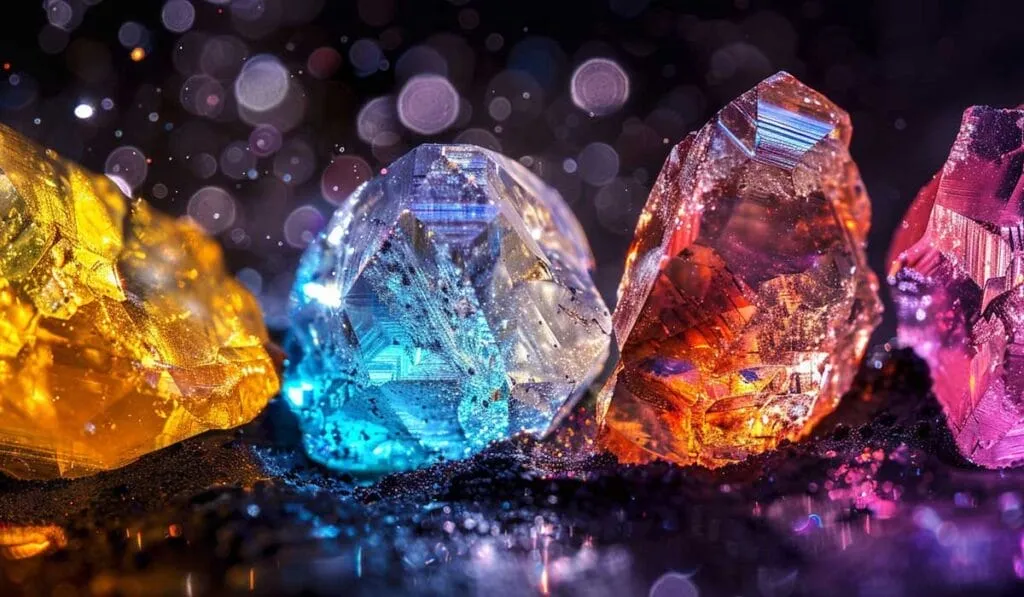
Ever wonder if your eyes can spot the difference between sparkly rocks from the earth and those created in a lab? Let’s dive into how they look and measure up, focusing on their sparkle, hue, flaws, and weight.
Visual differences between diamond types
To the naked eye, both lab-grown and earth-mined diamonds can look the same—a sparkle that catches your glance. But let’s dive deeper. Lab-created diamonds often have a perfection to them that natural ones might lack due to their controlled creation process.
Think of it as nature versus nurture; while earth creates beautiful gems with tiny flaws and unique color variations, labs focus on producing stones that are nearly flawless.
Moving on, colors speak volumes too. Natural diamonds come in shades ranging from colorless to slightly yellow or even brownish—like a sunset variety pack.
On the flip side, most lab diamonds boast a more consistent colorless treasure trove since scientists have figured out how to minimize impurities.
Next up: understanding how cut, color, clarity, and carat tell more stories about these sparkly wonders.
Evaluating the 4Cs: Cut, Color, Clarity, Carat
Diving right into the heart of diamonds, let’s break down the 4Cs: Cut, Color, Clarity, and Carat.
These are the big guns that play a major role in a diamond’s beauty and value. And guess what? They apply to both natural and lab-created stones!
| Aspect | Explanation |
|---|---|
| Cut | This isn’t about shape. It’s all about how well the diamond has been shaped and faceted to allow light to dance through it. A well-cut diamond, whether from the earth or a lab, sparkles like no other. |
| Color | Here, less is more. Diamonds are graded from D (colorless) to Z (light yellow or brown). Colorless diamonds are rare and cost a pretty penny, whether they’re kissed by nature or born in a lab. |
| Clarity | Imagine a pristine lake on a calm day. That’s your ideal diamond. Clarity grades the absence of blemishes and inclusions. Both natural and lab-created diamonds can achieve high clarity, but nature’s versions often carry unique birthmarks. |
| Carat | Size does matter, at least here. Carat weight tells you how much a diamond weighs, with one carat equaling 200 milligrams. Whether lab-grown or mined, the more carats, the bigger the impact (and the price). |
Whether your rock comes from the depths of the earth or a state-of-the-art lab, these 4Cs are your best pals in picking out that perfect diamond. Now, who said diamonds are just a girl’s best friend? They’re everyone’s!
Comparing Durability and Longevity
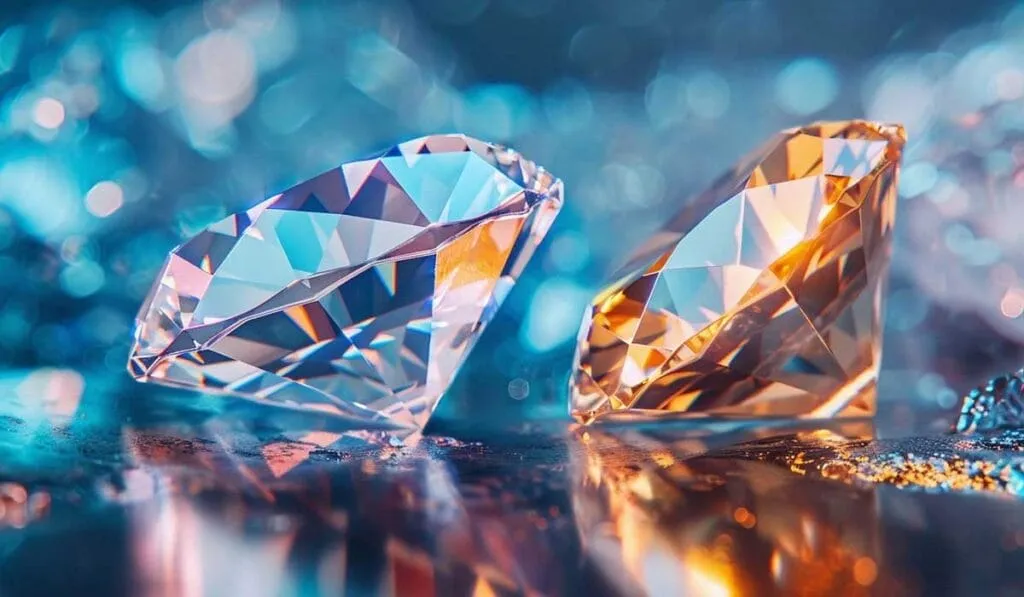
Which one lasts longer, a natural diamond or its lab-made twin? Let’s dive in. Both types are tough cookies, for sure. Diamonds, either from the Earth or a lab, rank top-notch on the hardness scale.
Yet, how they stand up to life’s knocks and scuffs… well, that’s where the story gets juicy.
Comparing the lifespan of different diamond types
Both natural and lab-created diamonds sparkle for a lifetime, but their journey to your jewelry box is worlds apart. Natural diamonds take billions of years to form under the earth’s surface.
They’re like time capsules, holding secrets from deep within our planet. On the flip side, lab-grown diamonds are modern marvels created in just a few weeks using high-tech processes like HPHT (High Pressure High Temperature) or CVD (Chemical Vapor Deposition).
Despite their diverse origins, both types boast incredible durability thanks to their shared main ingredient – carbon atoms arranged in an unbreakable lattice structure.
This means that whether mined from the depths or cultivated in a lab, diamonds resist scratches and keep their shine through daily wear and tear.
Examining hardness and resilience
Diamonds, whether sparkling from the earth or crafted in a lab, boast unbelievable toughness. They’re the hardest known materials, making them almost immune to scratches and abrasions.
This resilience means your diamond ring can journey through life with you—facing everything from everyday tasks to those unexpected adventures.
Here’s something fascinating—I once saw a demonstration where both types of diamonds were put under pressure. The natural and laboratory-grown stones resisted up until about 10 billion pascals of pressure—that’s like having 1000 adult elephants standing on it! Both survived without a scratch.
This test showed me that no matter their origin, diamonds stand up to the challenge, ready to shine for generations.
Examining Cost Variations
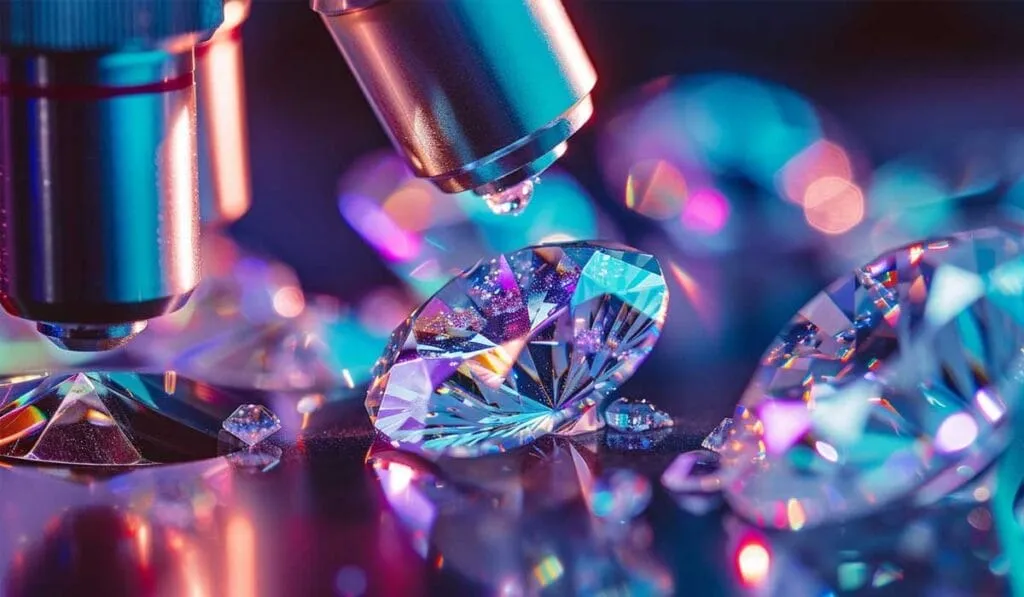
Digging into why some sparklers cost more than others can be a real eye-opener. Lab-created diamonds often have friendlier price tags than their Earth-dug cousins, sparking lots of questions about what goes into those price stickers.
Analyzing price differences
Let’s talk dollars and sense when comparing the cash you’ll fork over for natural diamonds versus their laboratory-grown cousins. Imagine walking into a diamond store with a wad of cash. The shiny rocks catch your eye, but the price tags? They’re enough to make your wallet weep. But here’s a twist: not all diamonds will empty your bank account in the same way. Yep, we’re examining bling-bling to see where you can save some green.
| Aspect | Natural Diamonds | Lab-Created Diamonds |
|---|---|---|
| Price Range | Higher, thanks to their rarity and the extensive mining process | Generally 30-40% less expensive than natural diamonds |
| Factors Affecting Price | Mining operations, transportation, rarity | Production costs, technology used |
| Resale Value | Typically retains better value over time | Lower resale value compared to natural diamonds |
| Initial Investment | Heavier on the wallet for a smaller stone | More bang for your buck, larger stones for the same price |
| Impact of Cut, Color, Clarity, Carat | Significant impact on price; higher grades = higher prices | Less variance in price compared to natural, but quality still matters |
So, I once explored this glitzy market, wallet in hand, curious and a tad naive. I eyed a gorgeously cut natural diamond. The price? Let’s just say I could’ve jetted off to an exotic island… or three. Then, the salesperson showed me a lab-created gem. Sparkly, sizable, and oh-so-kind to my bank account. That’s when it clicked.
Natural diamonds? They’re the old-school charmers, dazzling with tales of the Earth’s mighty powers. But they come with a hefty price tag, not just in dollars, but in the toll they take on our planet.
Lab-created diamonds, on the other hand, are the savvy newcomer. They’ve got the looks, the sparkle, and a price tag that won’t send you running for the hills.
So, next time you’re in the market for some sparkle, keep this in mind: the choice between natural and lab-created diamonds isn’t just about the bling. It’s about value, ethics, and yes, how much of your hard-earned cash you get to keep.
Reviewing factors that affect pricing
Moving from how natural and lab-created diamonds differ in price, let’s explore what really drives those numbers. The cost of both types is like a seesaw – up and down based on several playground rules.
For starters, the method used to create or mine these sparkly stones plays a big role. Digging diamonds out of the Earth takes a lot of equipment, labor, and time. Imagine using heavy machinery just to find a tiny gem! On the flip side, growing diamonds in a lab involves science and technology but skips the big dig.
The beauty of a diamond reflects not just its sparkle, but the journey it takes from deep within the Earth or an advanced laboratory.
Lab-grown options often have lower prices due to their less intensive birthing process. Yet, that doesn’t mean they’re cheap to make! Equipment for chemical vapor deposition (CVD) or high pressure high temperature (HPHT) methods costs quite the penny.
And while mined gems carry weighty ethical and environmental concerns—from disrupted lands to conflict funding—lab creations offer peace of mind with less strain on Mother Nature.
This eco-friendliness can appeal to consumers willing to pay more for sustainability over rarity.
So there you go—whether dug up by miners or cooked up by scientists, every diamond’s price tag tells its own tale.
Reviewing Certification and Sustainability
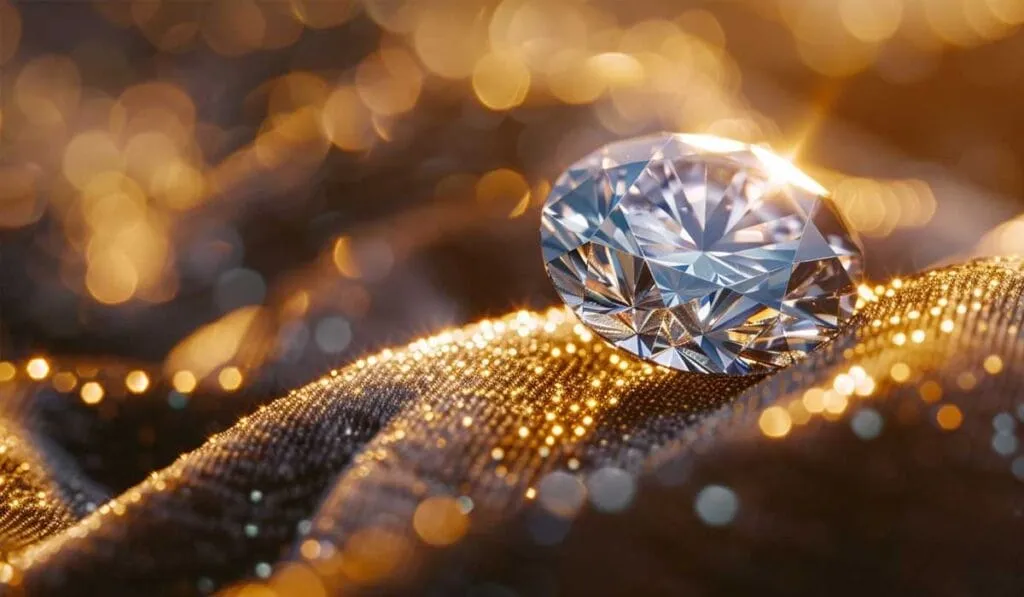
When shopping for diamonds, knowing if they’re the real deal or kind to our planet is a big deal. Certificates from labs tell us about a diamond’s story, while learning about how they affect Mother Earth helps us choose wisely.
Understanding certification for diamonds
Certification for diamonds acts like a diamond’s ID card. It tells you everything you need to know about it, such as its size, grade, and where it comes from. Both lab-created and natural diamonds can get this certification.
Labs like the Gemological Institute of America (GIA) or American Gem Society (AGS) do these checks. They look at the 4Cs: Cut, Color, Clarity, and Carat weight to rate each diamond.
Getting your diamond certified is key if you’re thinking of buying one. This paper proves its value and quality. Whether it’s a shiny engagement ring or a gift for someone special, knowing your gemstone has been checked by experts gives peace of mind.
Plus, for those concerned about ethics in the jewelry world—like making sure their diamonds don’t come from conflict areas—a certificate provides that extra layer of assurance with details on sourcing following the Kimberley Process guidelines.
Exploring environmental impacts
Digging up natural diamonds from the earth takes a lot of work. We use big machines and explosives to get them out. This process messes with animals’ homes, water, and even the air around us.
Think about it like inviting someone to dig up your backyard for treasure; things are bound to get messy.
On the flip side, creating diamonds in labs is cleaner for our planet. Labs use less water and don’t release as much carbon into the air. It’s like making cookies at home instead of buying them from a store that throws away too much plastic packaging—sweeter for you and better for Earth.
Observing Market Trends and Consumer Behavior

People these days flip-flop on diamond choices faster than pancakes on a hot griddle. Watching these trends is like riding a rollercoaster – ups, downs, and surprising turns!
Tracking consumer preferences over time
Tracking consumer preferences over time is like riding a rollercoaster, full of ups and downs. It shows us how tastes evolve, from the sparkle of natural diamonds to the shine of lab-created gems.
- For years, diamond mining led the charge, with shoppers aiming for that perfect natural stone. The allure was all about rarity and tradition.
- Enter the scene: lab-grown diamonds disrupt the game. In recent years, especially since 2018, there’s been a seismic shift leaning towards these ethical diamonds.
- Nearly 70% of millennials now consider lab-created diamonds as a top choice for engagement rings. They value sustainability and ethical production more than previous generations.
- Price plays a big role too. Lab-created pieces often cost less than their mined counterparts, making them attractive to budget-conscious buyers.
- Certification matters in both areas but for different reasons. Natural diamonds come with reports on their 4Cs—Cut, Color, Clarity, Carat—from entities like the GIA (Gemological Institute of America). Lab-grown equivalents also have certifications but focus more on their ecological footprint and ethical standards.
- Influencers and celebrities have shifted gears as well. Stars sporting lab-made diamonds on red carpets have brought additional clout to synthetic stones.
- Technology advances push this trend further. Techniques like CVD (Chemical Vapor Deposition) and HPHT (High-Pressure High-Temperature) improve lab diamond quality, making them almost identical to natural ones in brilliance and strength.
- Consumer awareness has spiked due to digital platforms and social media spreading words about lab-grown diamond benefits over traditional mined stones.
- As demand rises, so does supply; an increasing number of jewelers now offer laboratory-grown options alongside or instead of natural gems.
- Diamond simulants such as cubic zirconia played a role too but faced criticism for not matching up in quality or durability; they paved the way for acceptance of higher-quality synthetics.
- Environmental impacts weigh heavily on buyers’ minds today. The carbon footprint of creating a laboratory-grown diamond is significantly lower compared to extracting a similar carat weight from the earth.
- Federal Trade Commission guidelines evolved to embrace lab-created diamonds, recognizing them formally within the jewelry industry; this influenced buyer trust positively.
- With ongoing research by gemologists into enhancing synthetic methods, consumer preferences may further tilt towards lab-created options.
- Digital marketplaces boom with options for custom designs using laboratory-growth jewels—offering unique pieces at lower costs attracts younger audiences looking for something different yet meaningful.
- Finally, firsthand experience trumps hearsay; people who’ve bought or received lab-made diamonds often praise their beauty and value online, fueling interest among potential buyers through real-life testimonials.
As trends ebb and flow over time, one thing remains certain: Consumer choices are increasingly driven by values beyond mere aesthetics—focusing even more on sustainability, ethical sourcing, and cost-effectiveness in their jewel purchases..
Predicting future trends in diamond popularity
Diamond trends have a way of shining through time, much like the stones themselves. Lab-created diamonds are stepping into the spotlight, giving natural ones a run for their money.
With technology advancing in leaps and bounds, these lab-grown beauties offer sparkle without breaking the bank. Think about it: why pay more when you can get the same dazzle for less? And as folks become more eco-conscious, the appeal of diamonds not dug out of Earth but created in a lab seems to fit right in with our greener futures.
Diamonds have always been a girl’s best friend, but now they might just be Mother Nature’s too.
This shift hints at a future where choosing between types of diamonds isn’t just about price or prestige; it’s about personal values and taking care of our planet. As we move forward, expect to see even more jewelers and consumers favoring lab-made options.
The diamond industry is on the verge of change — ready to embrace both beauty and responsibility hand in hand. Let’s focus now on how this perspective influences certifications and sustainability efforts.
Conclusion
So, there you have it! Natural diamonds and those made in labs come from different worlds. One is born from the earth, millions of years old. The other? Created by scientists in a matter of weeks.
Each shines bright, but their stories—and price tags—are far apart. If saving the planet and your wallet matters to you, lab-created gems might just be your new best friend. But let’s not forget—the allure of a natural stone has danced through history for centuries.
It’s like choosing between vanilla and chocolate ice cream; both are sweet, yet each tickles the taste buds differently. What’s your pick?
FAQs
1. What’s the big deal about lab-created diamonds?
Lab-grown diamonds, also known as synthetic or human-made diamonds, are cooked up in labs using high-tech methods like HPHT (High Pressure High Temperature) and CVD (Chemical Vapor Deposition). Think of them as the test-tube babies of gemstones. They sparkle just like the ones dug out from deep within Earth but come without the heavy digging.
2. Are lab diamonds real diamonds or just sparkly fakes?
Let’s set this straight: lab-grown diamonds are 100% real diamonds. They have the same chemical composition and bling factor as natural ones. The main difference? One comes from below ground, courtesy of Mother Nature, and the other is whipped up in a laboratory by humans wearing white coats.
3. Can you spot the difference between a natural diamond and a lab-made one with your naked eye?
Here’s where it gets interesting: nope! Even graduate gemologists need special equipment to tell them apart because both types share identical properties. It’s like trying to pick which twin did the prank; without clues, you’re at a loss.
4. Do lab-created gems play second fiddle to natural ones when it comes to quality?
Not at all! Lab gems can reach “internally flawless” status on clarity grades – that means no blemishes or inclusions messing with their sparkle. So if you’re after perfection, these human-crafted beauties don’t disappoint.
5. Why would someone choose a laboratory-grown rock over an earth-mined jewel?
Choosing between a lab diamond and its earth-dug cousin often boils down to personal values and pocket depth. Some folks lean towards lab-created for ethical reasons – less dirt moved means less impact on Mama Earth. Others find their wallets breathe easier since synthetics tend to be more budget-friendly for similar quality.
6. How does choosing between different types of artificial rocks affect our planet?
Opting for stones created in laboratories over those mined from terrains can be kinder to our environment—fewer trucks rumbling through nature preserves mean happier trees and critters! Plus, scientists get to flex their brain muscles inventing cool new ways to make sparklies without turning landscapes upside-down.




